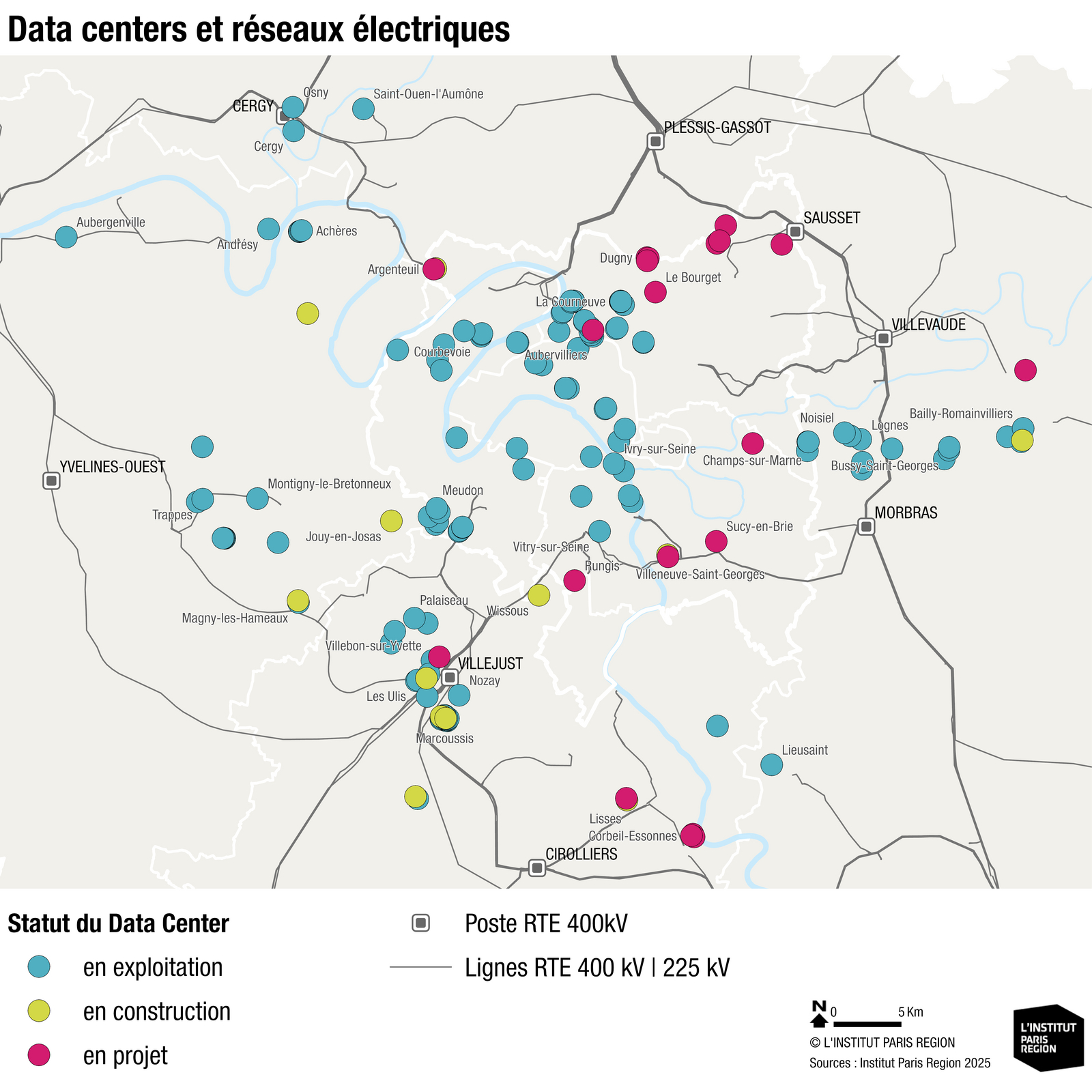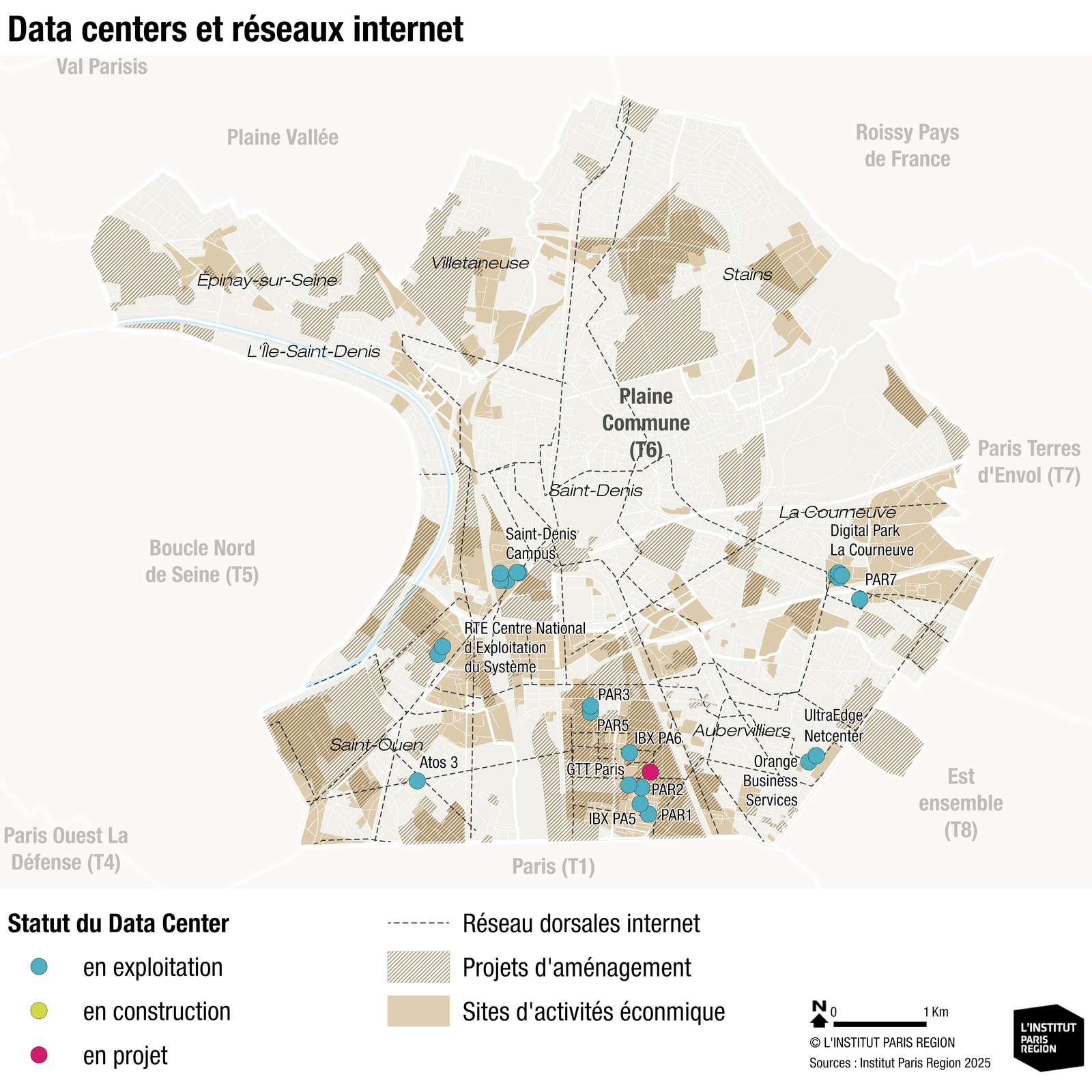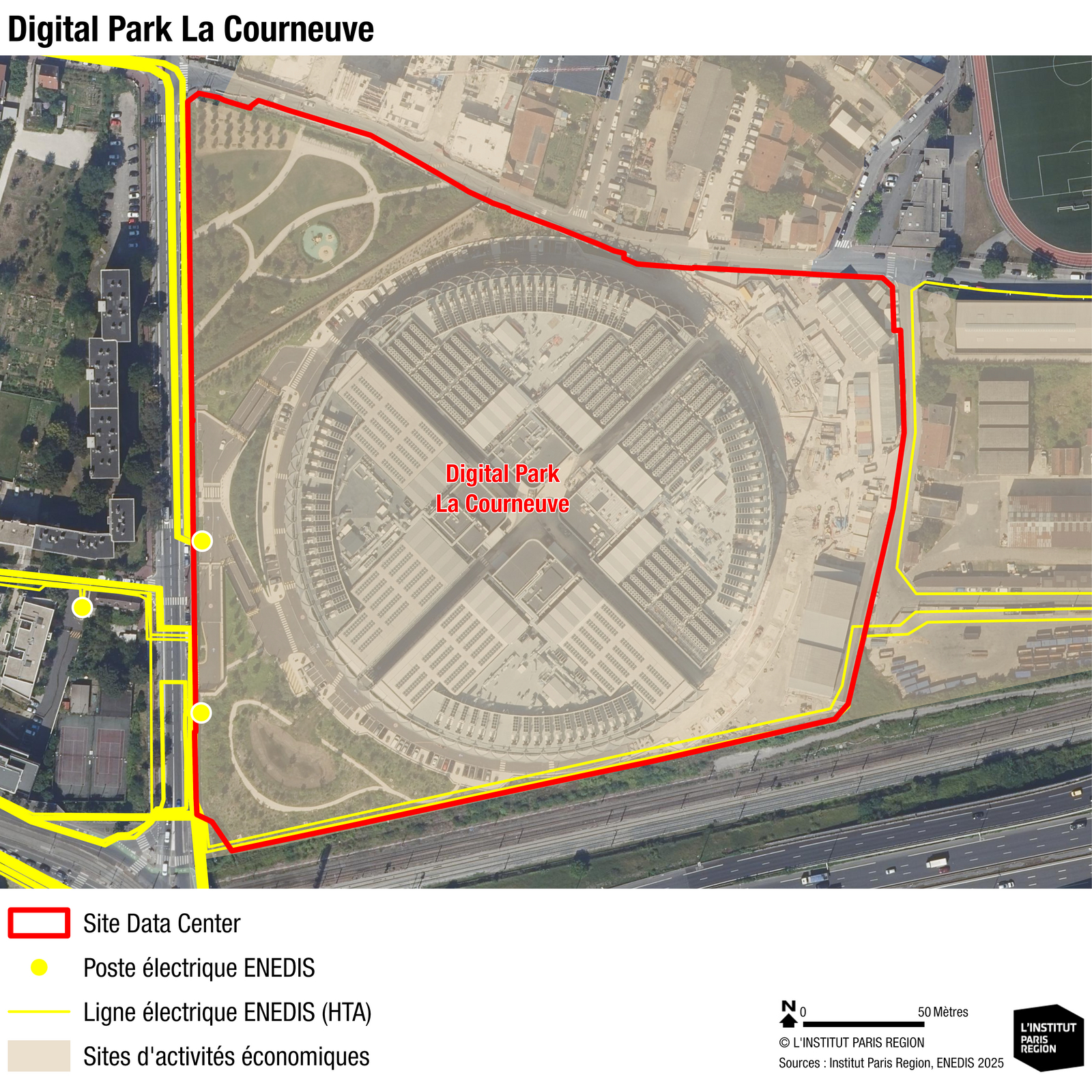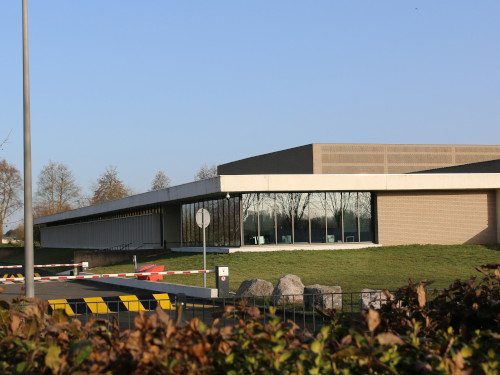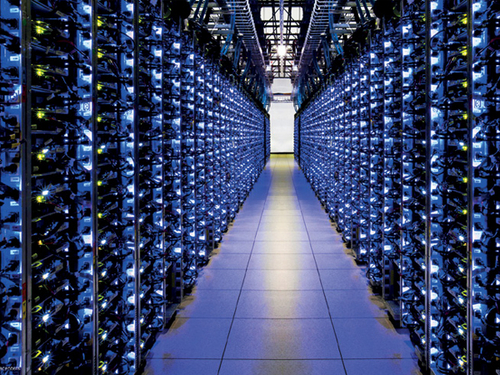While the interactive map provides access to localized information about data centers in the Paris region, the Institut Paris Region can also support local public stakeholders in their territorial planning and decision-making regarding these infrastructures. These tailor-made support services are based on a cross-cutting approach—at the core of the Institute’s identity—combining environmental, energy, land use, urban, and digital dimensions. They aim to shed light on territorial dynamics at various scales and to better integrate data center-related challenges into spatial planning and economic development policies. The Institut Paris Region is already supporting the Paris region authority, local authorities, and other public stakeholders on these issues.
Observatory of data centers in the Paris Region
Essential to the functioning of digital technology, data centers have established themselves since the 2000s as indispensable infrastructure, driven, among others, by the rise of virtualization, cloud computing, platforms, and now, artificial intelligence. Still largely invisible to the general public and little known by public authorities, these facilities have nonetheless become central to the digital transition of businesses and public administrations. In the Paris region, as in other major metropolitan areas, data centers are now emerging as a new focus of public policy and local debate, at the intersection of digital, energy, urban, and environmental issues.
In response to these challenges, the Institut Paris Region is proposing the establishment of a dedicated observatory for data centers, with the aim of structuring and strengthening territorial knowledge about these infrastructures and their siting dynamics. It will enable decision-makers to reflect on the impacts and levers for action specific to each territory, and will provide a framework for dialogue to collectively deepen understanding of emerging issues, such as those related to high-performance computing needs.
With a database on data centers built since 2017, the Institut Paris Region currently records over 160 data centers across 109 sites in the Paris region, with a steadily growing trend. The Paris region concentrates around one-third of all data centers in France and hosts the majority of major infrastructures. This positioning is explained by the presence of innovation hubs, a dense economic fabric, and an environment that is attractive to digital companies. Data centers, including enterprise computing facilities and edge data centers, have become both catalysts for the digital transition and drivers of territorial attractiveness. However, their development raises significant challenges in terms of energy consumption and land use pressure.
Beyond the simple location of these infrastructures, our reference framework provides information on the electrical connection capacity (Power Classes) of each site and, when available, on the surface area of the server rooms. Each site has also been analyzed in relation to the urban fabric in which it is embedded: former industrial site, repurposed brownfield, urbanized agricultural land, for example. This work thus helps to better characterize the ongoing siting dynamics.
The database also makes it possible to identify the main operators present in the Paris region, to track the emergence of edge data centers — more compact and distributed facilities — and to better understand the patterns of concentration or dispersion of stakeholders across the region. It also includes information on whether the sites are connected to a district heating network, drawing in particular on data from AREC, based on FEDENE data.
This database has been gradually enriched through regular exchanges with many of the Institute’s partners, such as DRIEAT, RTE, Enedis, Choose Paris Region, and ADEME, who contribute to refining territorial knowledge of these complex and rapidly evolving infrastructures.
Available on this page, an interactive map—regularly updated—allows users to visualize data center locations and access key information about the various sites across the Paris area.
Geographic distribution of data centers and their evolution
The Paris region has been experiencing continuous growth in the number of data centers, with a marked acceleration over the past two decades. Initially concentrated in the inner suburbs, particularly in Seine-Saint-Denis — a pioneering area with numerous compact urban sites focused on hosting or computing (EDGE) — data center developments are now shifting toward the outskirts of the metropolitan area and even the outer suburbs, with larger-scale projects.
Essonne is emerging as a strategic area, particularly around the Paris-Saclay cluster, thanks to the availability of land, its proximity to major energy infrastructure (notably RTE’s 400 kV ring), and controlled development costs. The DATA4 campus in Marcoussis is a flagship example, with more than 20 buildings dedicated to server rooms.
This evolution also reflects a technical upscaling: projects now frequently exceed 10 hectares and require electrical capacities ranging from 50 to 100 MW.
The available land in business parks, often undergoing or awaiting redevelopment, is attracting growing interest from data center operators. In a context where reindustrialization goals are gaining importance, this trend raises questions about the trade-offs to be made between different uses and economic development priorities.
Finally, the market is seeing a diversification of its players. In addition to the traditional operators, major logistics and industrial real estate groups such as Goodman, Prologis, Segro, and Icade are now entering the scene. Their arrival is reshaping location dynamics and intensifying land-use pressures in already highly sought-after areas.
Multiscale Approach
At the regional scale
Understanding key dynamics
Regional analysis helps to understand the role of data centers in the transformation of the Paris region: their concentration, their connection to major innovation hubs, and the growing pressures on land and energy. A comprehensive overview to inform long-term planning decisions.
At the scale of a territory
Cross-analyzing urban issues
Observing data centers at the scale of an EPT such as Plaine Commune, or an intermunicipal structure, makes it possible to connect digital challenges with local policies on urban planning, energy transition, and economic development. It is at this scale that concrete trade-offs are made.
At the site scale
Qualifying installations
A fine-scale analysis makes it possible to place a data center within its immediate context: urban fabric, previous land use, proximity to infrastructure, and available land. It sheds light on local hosting conditions, potential impacts, and the levers for integration or redevelopment.
Contacts

Gianluca MARZILLI
Gianluca is responsible for the Observatory of data centers in the Paris region and its associated database. He conducts multi-scale analyses of location dynamics, with particular attention to the urban integration of data centers, their compatibility with planning documents, and provides a cross-cutting perspective on development strategies.
gianluca.marzilli@institutparisregion.fr

Félix SOLÉ
Félix analyzes commercial real estate at the Paris region scale. His work focuses in particular on the transformation of data centers into a new class of financialized assets and their hybridization with traditional branches of commercial real estate, such as office spaces or business premises.
felix.sole@institutparisregion.fr

Dylan POTTIER
Dylan coordinates and leads the statistical observation network for energy and greenhouse gases (ROSE). He annually produces the inventory of energy production down to the municipal level (including the recovery of waste heat from data centers). ROSE also produces the inventory of energy consumption and greenhouse gas emissions (in collaboration with Airparif) and aims to monitor data centers in terms of their current and future energy consumption.
dylan.pottier@institutparisregion.fr

Daniel THÉPIN
Daniel analyzes the evolution of data centers in the Paris region from an economic perspective, as well as the major trends expected in the coming years.
daniel.thepin@institutparisregion.fr

Thomas HEMMERDINGER
Thomas heads AREC, the energy and climate department of the Institut Paris Region, which monitors and documents the energy transition, decarbonization, and climate change adaptation. It also facilitates stakeholder networks and supports planning and project development. At the regional level, he studies the energy impacts of data centers (projected energy consumption, efficiency, heat recovery, backup power supply, etc.).
thomas.hemmerdinger@institutparisregion.fr
This page is linked to the following categories :
Economy
|
Urban planning

